Removing the rear window from a car is not without compromises. Still, the Polestar 4 stands as a cool alternative to the expensive boys in the class.
Now what kind of well-turned carriage outfit is that? It is the Polestar 4, which at first glance can be a bit difficult to place. It’s not quite high enough to be an SUV, but it’s not quite low enough to be a coupe either. The specifications smell a bit like a sports car, but both the cabin and undercarriage invite more for uncompromising comfort. And it has no rear window?
In terms of size, it places itself closer to the upcoming SUV Polestar 3 than it does to the popular Polestar 2, without, however, standing in the way of either of them. The Polestar 4 must instead stand in the way of competitors such as the Audi Q6 e-tron, BMW iX3 and Porsche Macan Electric.
I’m trying to find out what the Polestar 4 really wants when it goes to Bilbasen for testing in the Long Range Dual Motor variant.
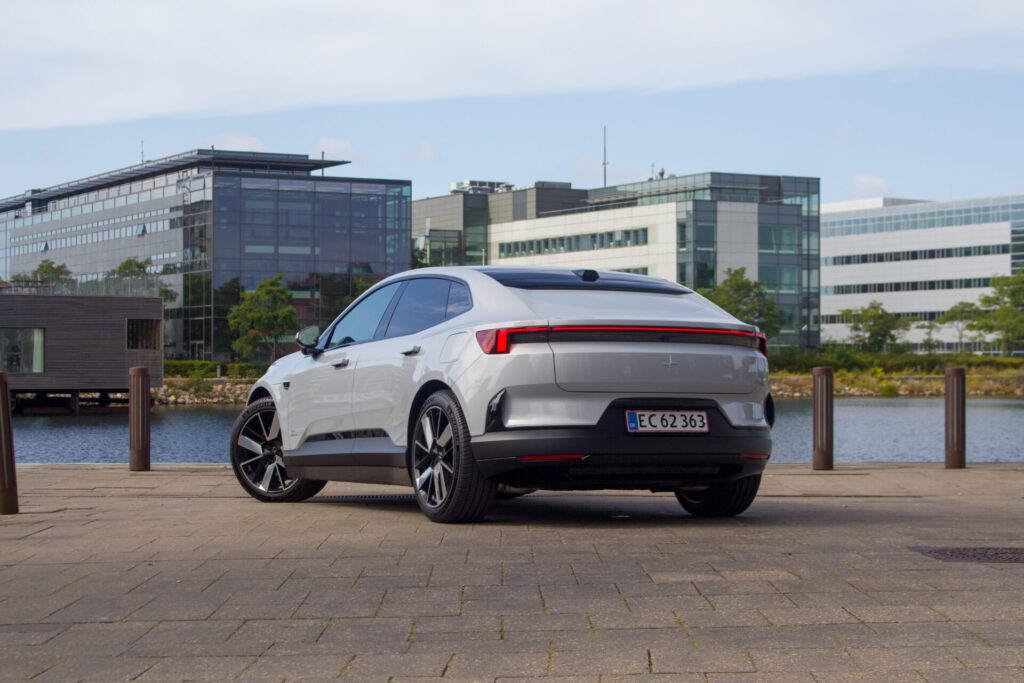
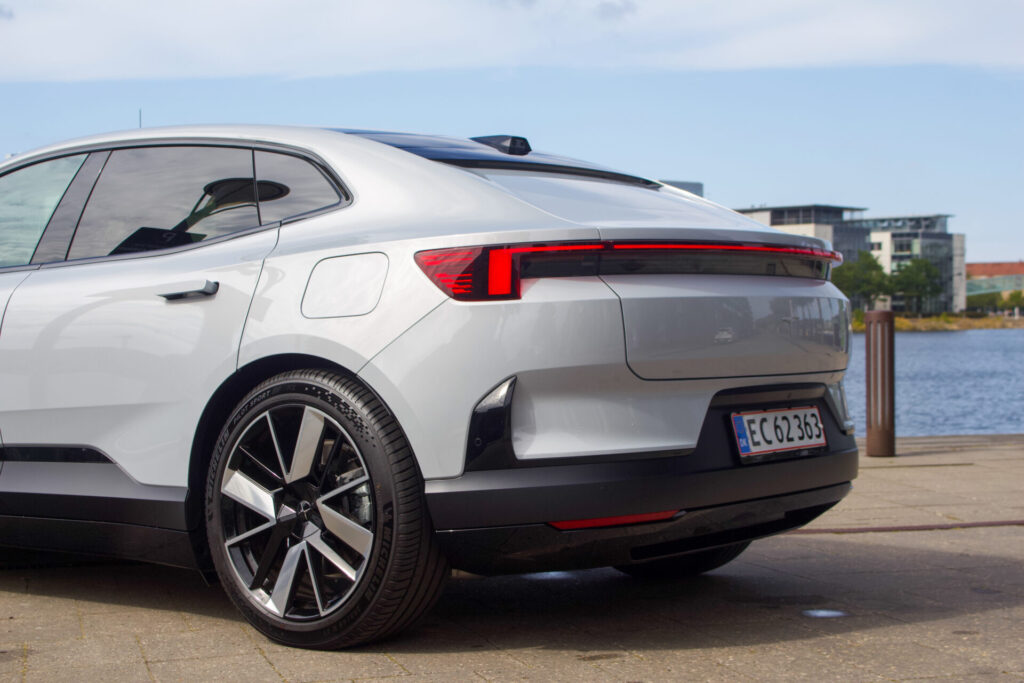
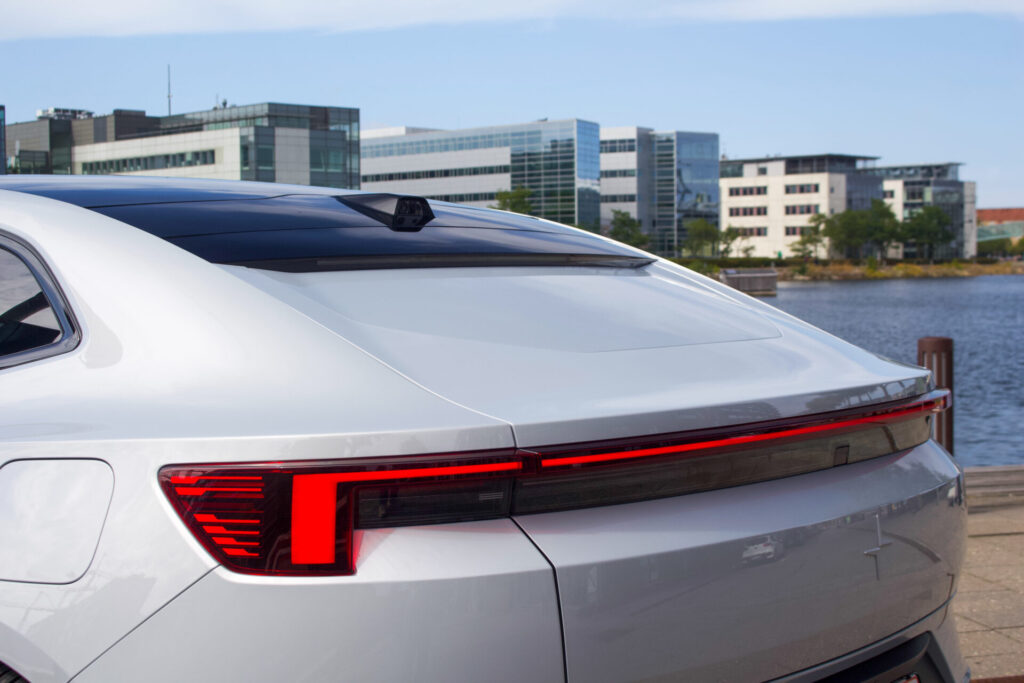
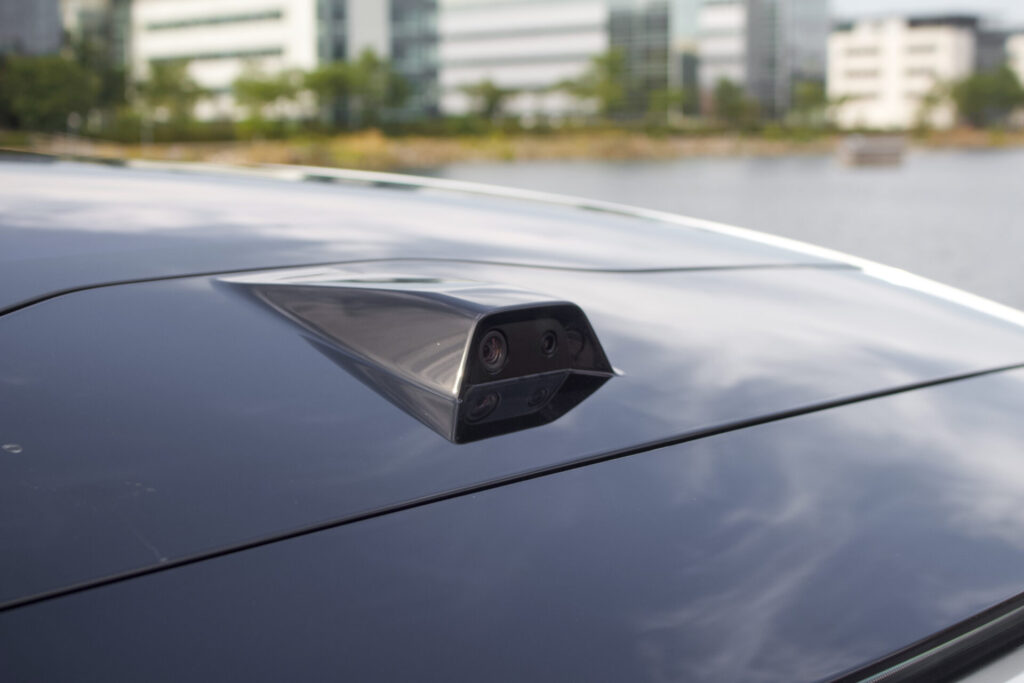
The car without a rear window
You read that right. The Polestar 4 is not equipped with a rear window because the designers wanted to go hard for a sloping roofline without stealing headroom from the rear seat passengers. The solution was completely impractical to remove the rear window and replace the rear view with a digital rear view mirror.
It works better than digital side mirrors, where, as in the Audi e-tron, you completely lose the distance judgment when changing lanes or parking backwards. It is less critical with a rear-view mirror that is only used for orientation – but it is not for everyone. It takes getting used to for the eyes, because you go from looking out of the windscreen to looking at a screen that does not give the eyes the same depth dimensions.
If you live in a larger Danish bicycle-friendly city, the solution is not recommendable either. Sure, you can get used to orienting yourself on a screen, but the lack of a rear window gives a massive blind spot at the back. Cyclists hide well around here, and you are forced to orientate yourself only in your mirrors.



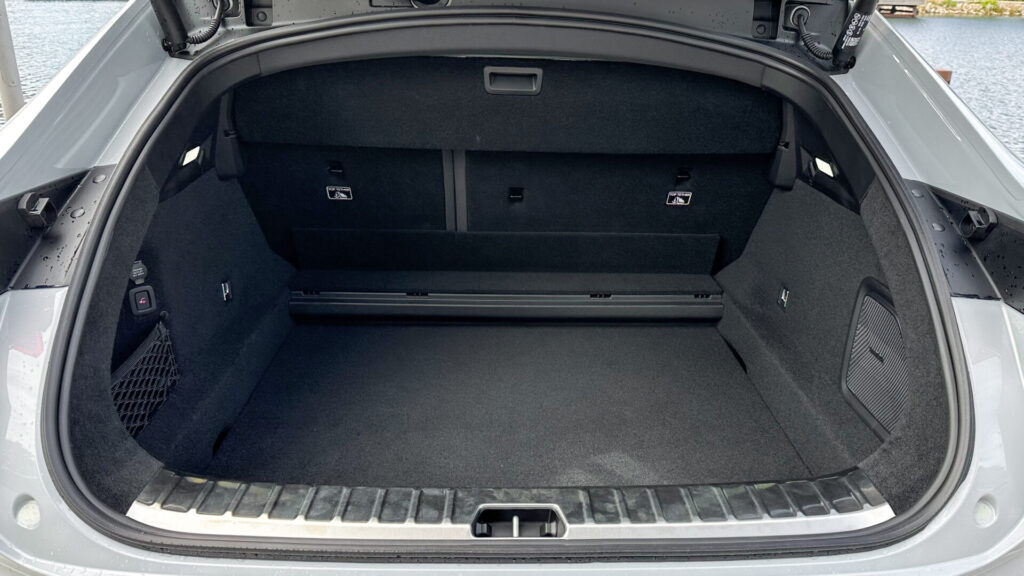
The lack of rear window also means that it is not a car for dog owners. The luggage compartment is otherwise spacious with a capacity of 526 liters and a wide opening that accommodates a pram nicely. After all, the lack of a rear window means that the main space actually is perfectly fine even for people of 1.90 meters despite. In my view, however, it is not enough to compensate for the other compromises.
What about the rest of the cabin?
If the lack of a rear window doesn’t put you off, the Polestar 4 is worth considering for the cabin alone. Regardless of how large the Chinese ownership is, there is a clear Scandinavian edge in the cabin, which ensures clean lines, beautiful materials and a general experience that differentiates itself from the German competitors.
Where the Germans typically drive some form of wood or metal, Polestar drives with braided mesh textiles in the dashboard and on the door sides. It is a little rough if you bump into it with your elbow, but to the eye it ensures a different lightness, while this material is also developed with a view to 100 percent recyclability. And before you think it’s all sacred, the Polestar 4 can still be ordered with Nappa leather.
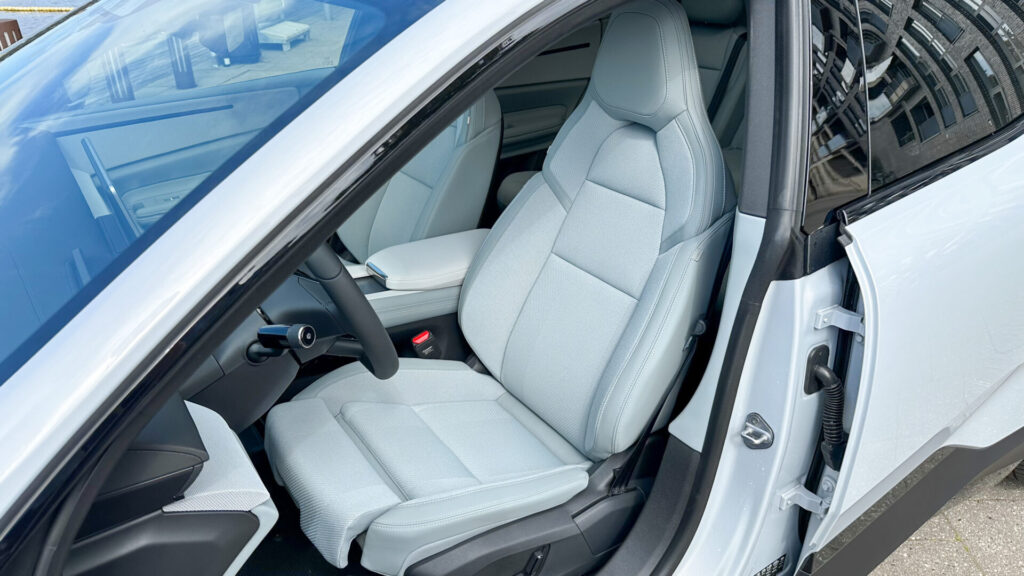
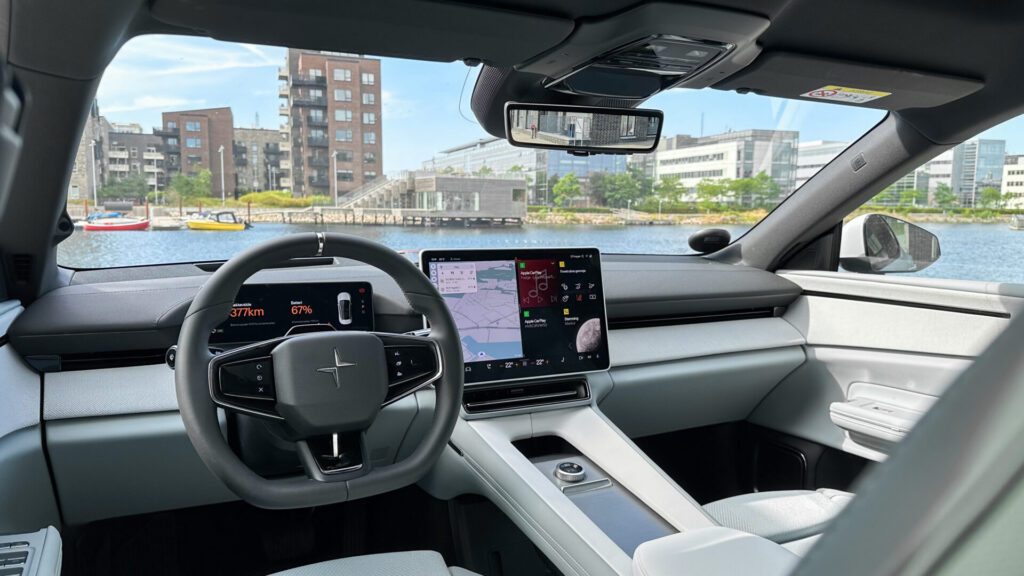


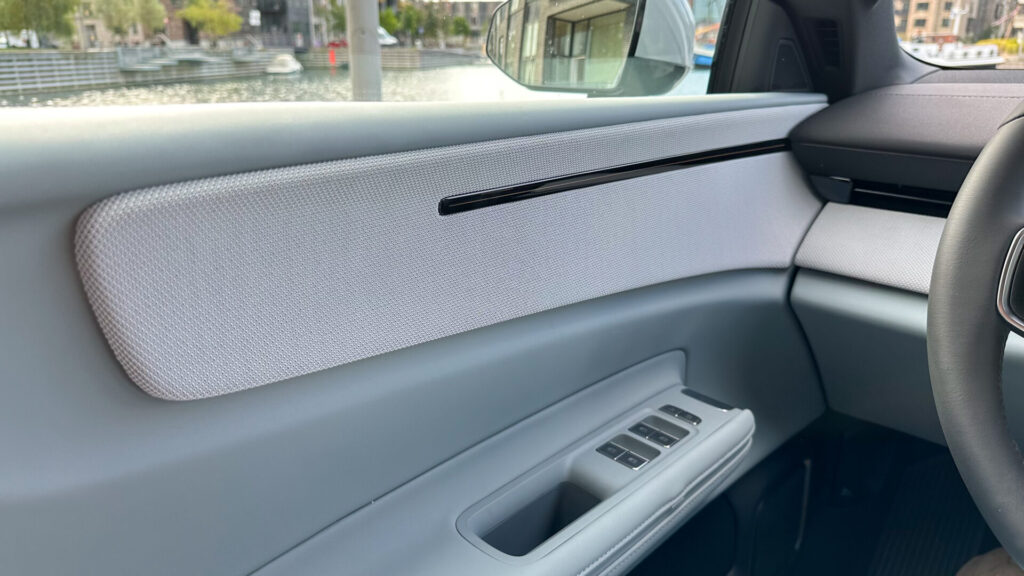
If you ignore the technological textile, the cabin feels fundamentally decadent and well put together. The seats have a clear scent of Volvo and provide excellent comfort, where you quickly find an optimal driving position from the driver’s seat. It is by no means SUV-high and is more reminiscent of a driving position from a quite ordinary sedan.
The airy minimalism does not come without compromises, as the cabin is completely devoid of buttons. Even the buttons on the steering wheel are of the pressure-sensitive kind, which despite haptic feedback are annoying to use. Especially because there are no icons on most of them. Adjusting the side mirrors is done on the blind buttons, just like adjusting the air nozzles takes place somewhat fussily on the infotainment screen.
That said, the infotainment screen is gorgeous. It measures 15.4” and has crystal clear resolution. The system is supplied by Google and is miles ahead of that in the Polestar 2. Here sits an obviously fast processor that eliminates hesitation, while apps such as Spotify and Amazon Prime can be downloaded from the Google Store for passing the time at the charging stand. On the home screen, you can set your own shortcuts, so that the speed alarm and lane assistant are removed with one press.
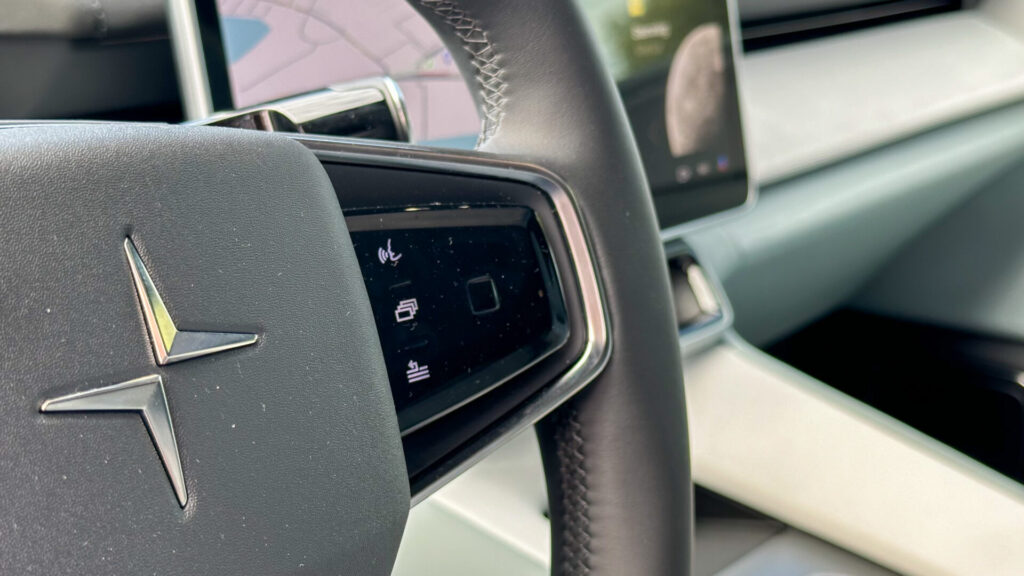
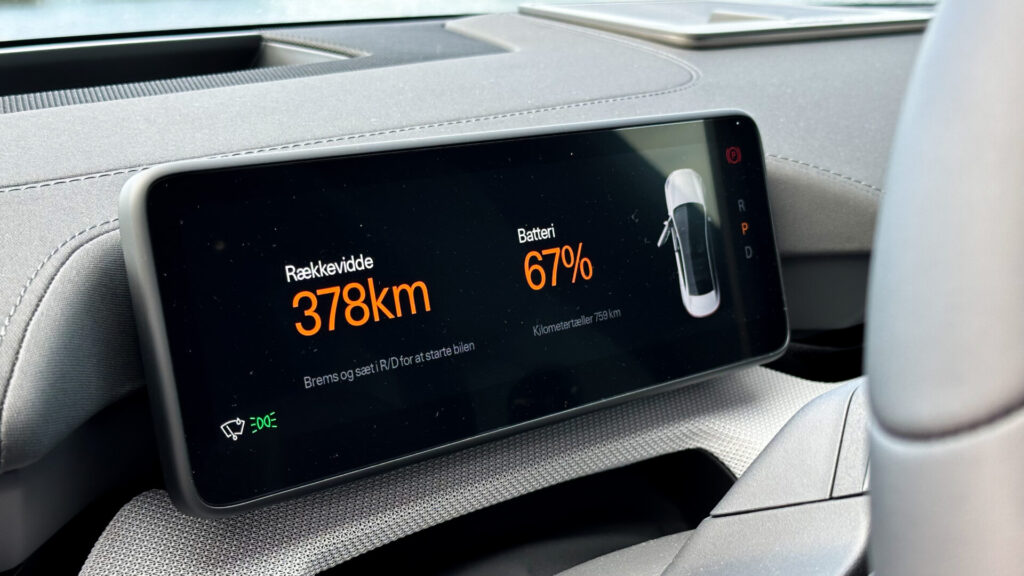

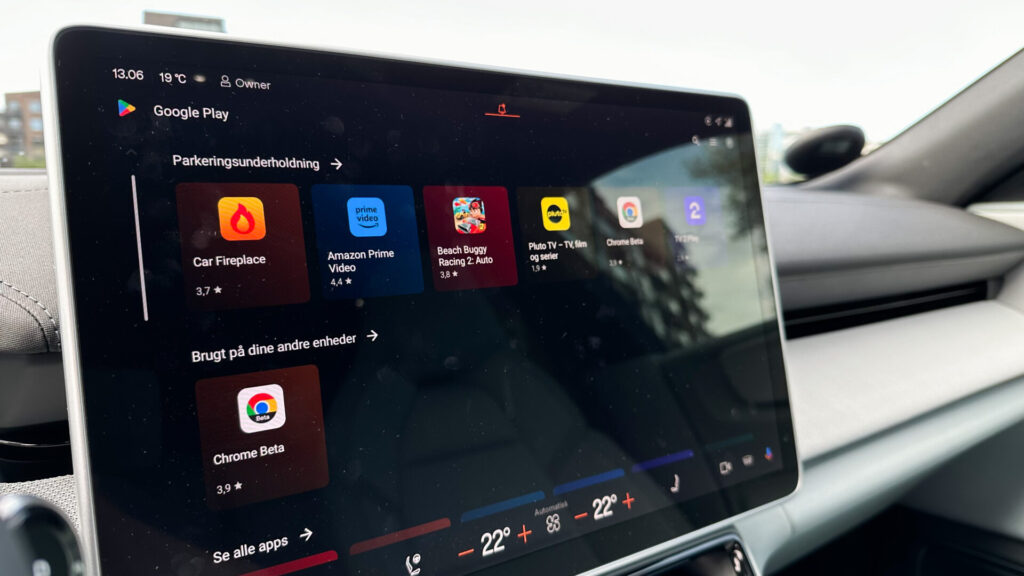
Powerful comfort without sport
Although 544 hp, 686 Nm and acceleration from 0 to 100 km/h in 3.8 seconds may indicate sport, there are quite a handful of character traits in the Polestar 4 that tell a different story. Because probably this is a ‘Performance SUV‘ with a low center of gravity, but this is overshadowed by another stone in the shoe: the fighting weight of almost 2,400 kg.
The steering is, according to Polestar themselves, the most direct and engaging they’ve ever thrown into a car, while the adaptive suspension in this Dual Motor variant handles cornering with bravura. Still, the Polestar 4 drives like a very heavy car.
Whether the steering is engaging, I’m not so sure, but it’s accurate. It is therefore not difficult to throw the car quickly into a bend. However, the system that controls the power distribution between the four wheels is not included in the fresh galley. On the contrary, it seems a little conservative, and when all the weight is shifted in turns, it does not help the dynamics. The Polestar 4 is not a car that rips and tears itself out of corners.
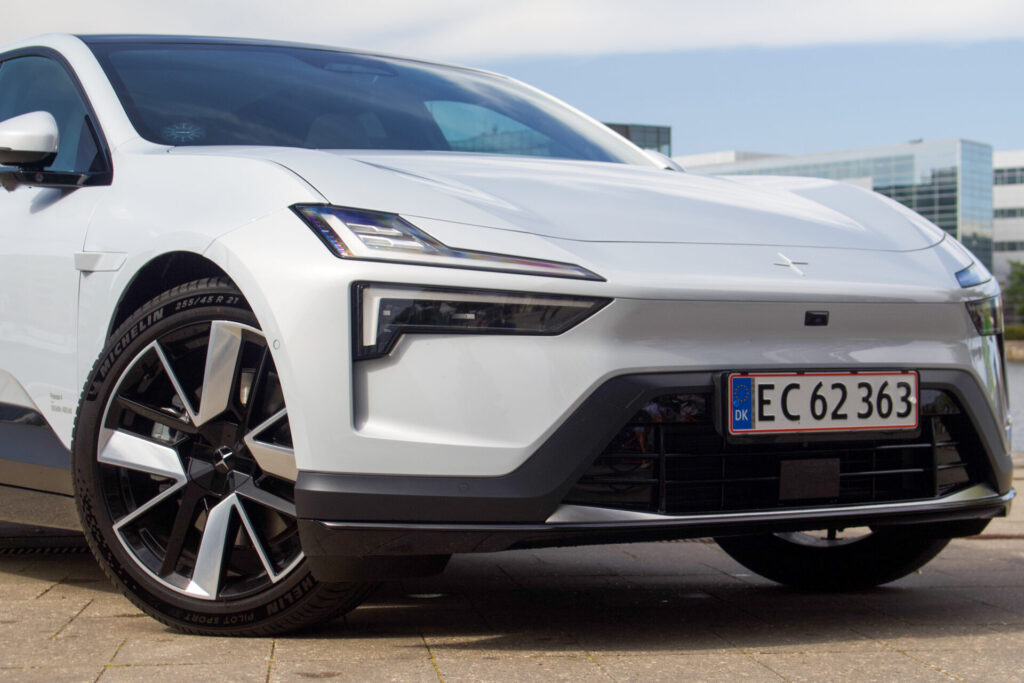

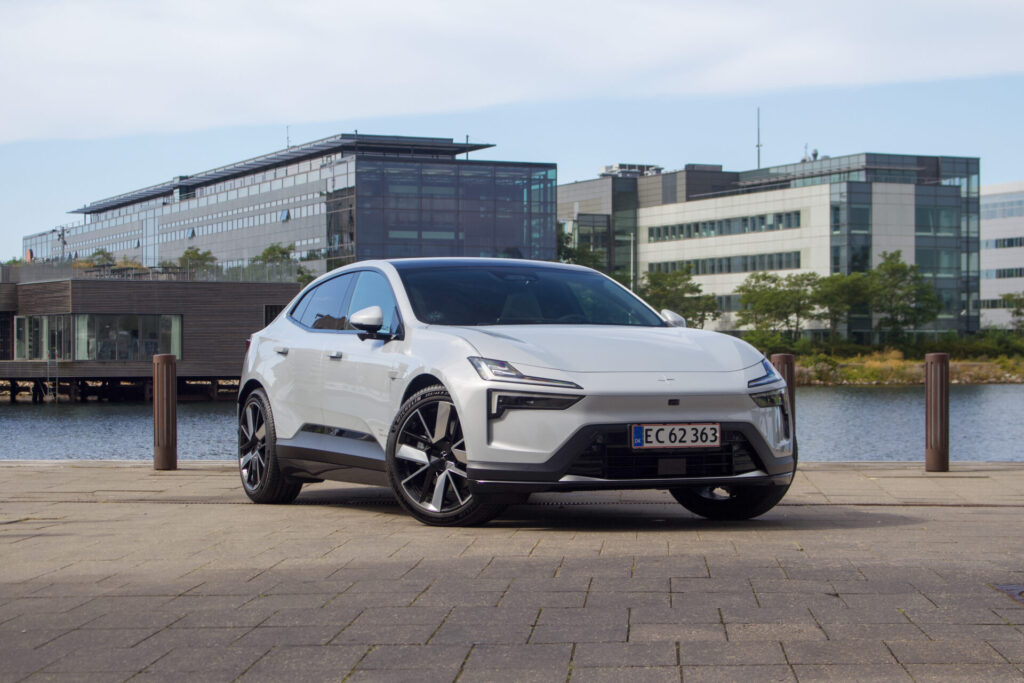
The fighting weight is better used for the completely unmistakable feeling of heaviness that the Polestar 4 gives when you flow uncompromisingly along more linear country roads and highways. It stands like glue to the asphalt with a stability and calmness that means that you have no qualms about driving long stretches in the well-turned float. Only over sharp bumps at low speed does the adaptive chassis fall short, and the 2,430 kg makes it strike again. This should be able to be reduced if you bypass the 21″ big nipples that the test car has.
To the question of whether the Polestar 4 is a car you can actually drive long distances in, the answer is yes. It is equipped with a 100 kWh battery, which, despite a large excess of power in the Dual Motor variant, can provide up to 590 km in range. It’s nice, and with 200 kW DC charging and the option of 22 kW AC, the Polestar 4 is an electric car of a caliber suitable for long journeys.
Polestar 4 vs. the competitors
The Polestar 4 costs from DKK 465,000 in the Single Motor variant with 620 km of range, while the tested Dual Motor costs from DKK 495,000 with the aforementioned 590 km of range.
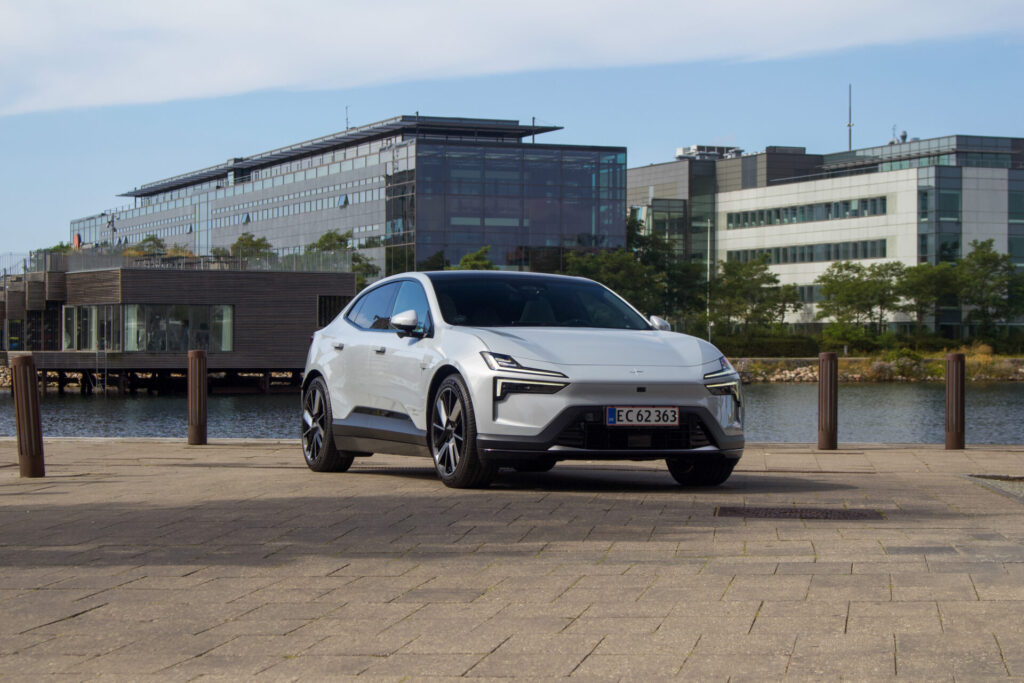

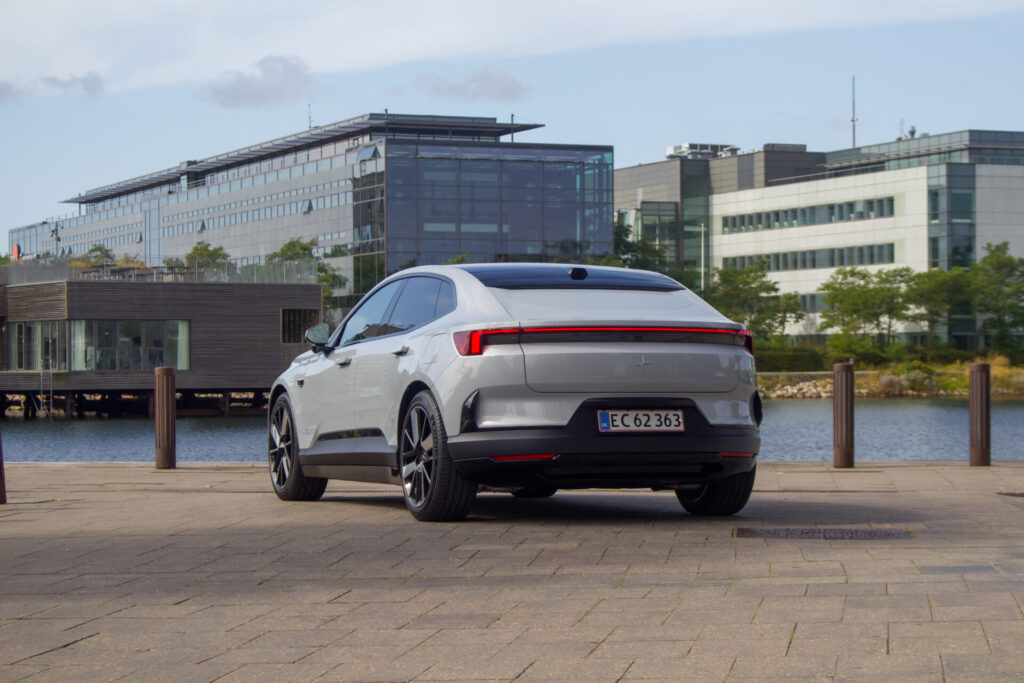
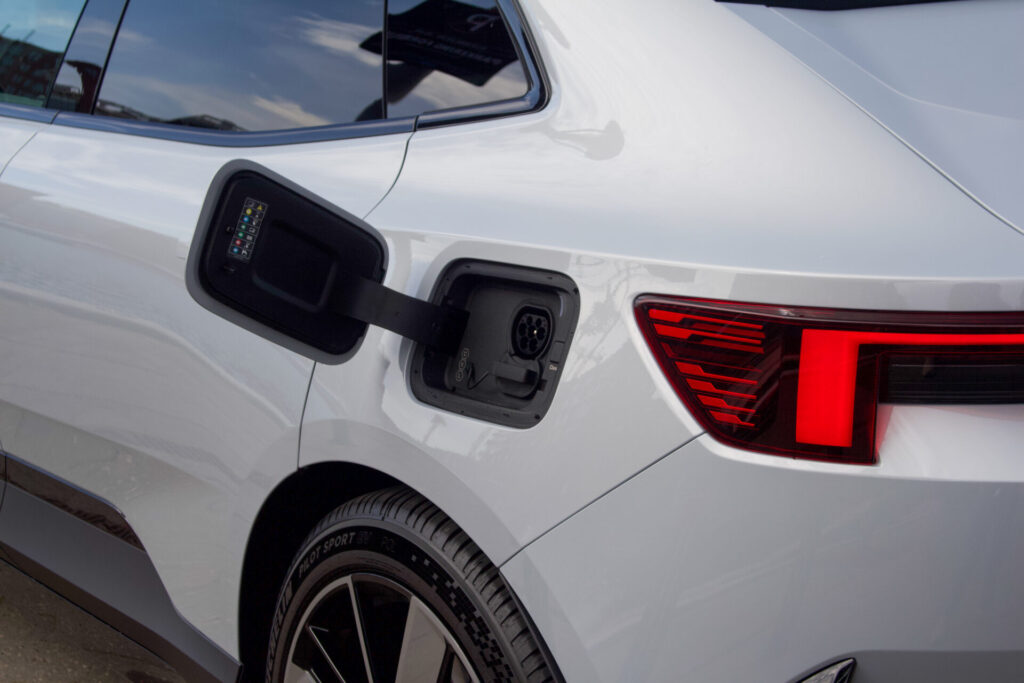
It’s a lot of money, but it’s nice compared to the competition. Even if you add the recommended Plus package for DKK 31,250, which comes with Harman Kardon sound system, 12-way electrically adjustable heated front seats, heated rear seats and steering wheel, head-up display, pixel LED headlights and 22 kW AC- charging. A quick look at the competitors shows higher prices across the board.
The Audi Q6 e-tron starts from DKK 589,990, while a four-wheel drive Quattro variant, which is more comparable to the Polestar 4 Long Range Dual Motor, costs from DKK 659,990. The Porsche Macan Electric starts from DKK 719,900, while the 4S variant runs up to DKK 879,900 DKK, while an aging BMW iX3 starts at DKK 520,000 with less power and a shorter range.
What does the Polestar 4 want?
After a week of testing, I’m still not quite sure what the Polestar 4 wants. Evil tongues will also be able to challenge the three cars I have chosen as competitors, just because it is at least 9 cm lower than all of them and does not look like an SUV.
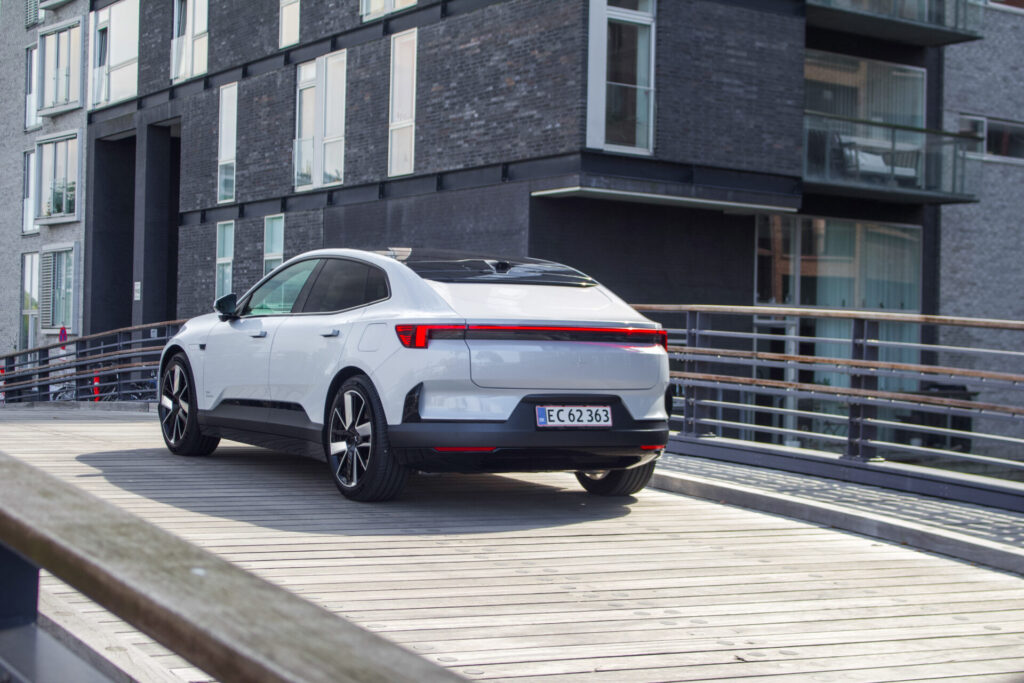
My best bet is that the Polestar 4 will simply be a luxurious and eye-catching alternative to this class of premium-SUVs. And, in principle, it manages that very well. In my opinion, it looks stunningly good, it is comfortable, and it is equipped with a decadent cabin, which also has the technology with it in the form of a dangerously fine infotainment screen. And best of all, it makes it cheaper.
The challenge for the Polestar 4 may be exactly what I started the review with: That people don’t understand it. That it stands out too much from the others and that it tries to mix too many things into the same well-turned pear gruel. And then, of course, the rear window, which is not there.
SPECIFICATIONS
Polestar 4 Long Range Dual Motor
Motor: Electric motors (front and rear)
Performance: 544 hp / 686 Nm
0-100 km/h: 3.8 seconds
Top speed: 200 km/h
Consumption: 18.7 kWh/100 km
Range: 590 kilometers
Battery size: 100 kWh (94 kWh usable)
Charging capacity: 200 kW
Dimensions (L/W/H): 484/200/153 cm
Curb weight: 2,371 kilos
Draw weight: 2,000 kilos
Trunk volume: 526-1,536 litres
Price: DKK 495,000 (Polestar 4 available from DKK 465,000)
Private leasing (one-off payment/monthly payment): DKK 19,995/6,295 (Polestar 4 available from DKK 5,995)
Tax basis, company car: From DKK 449,964.
